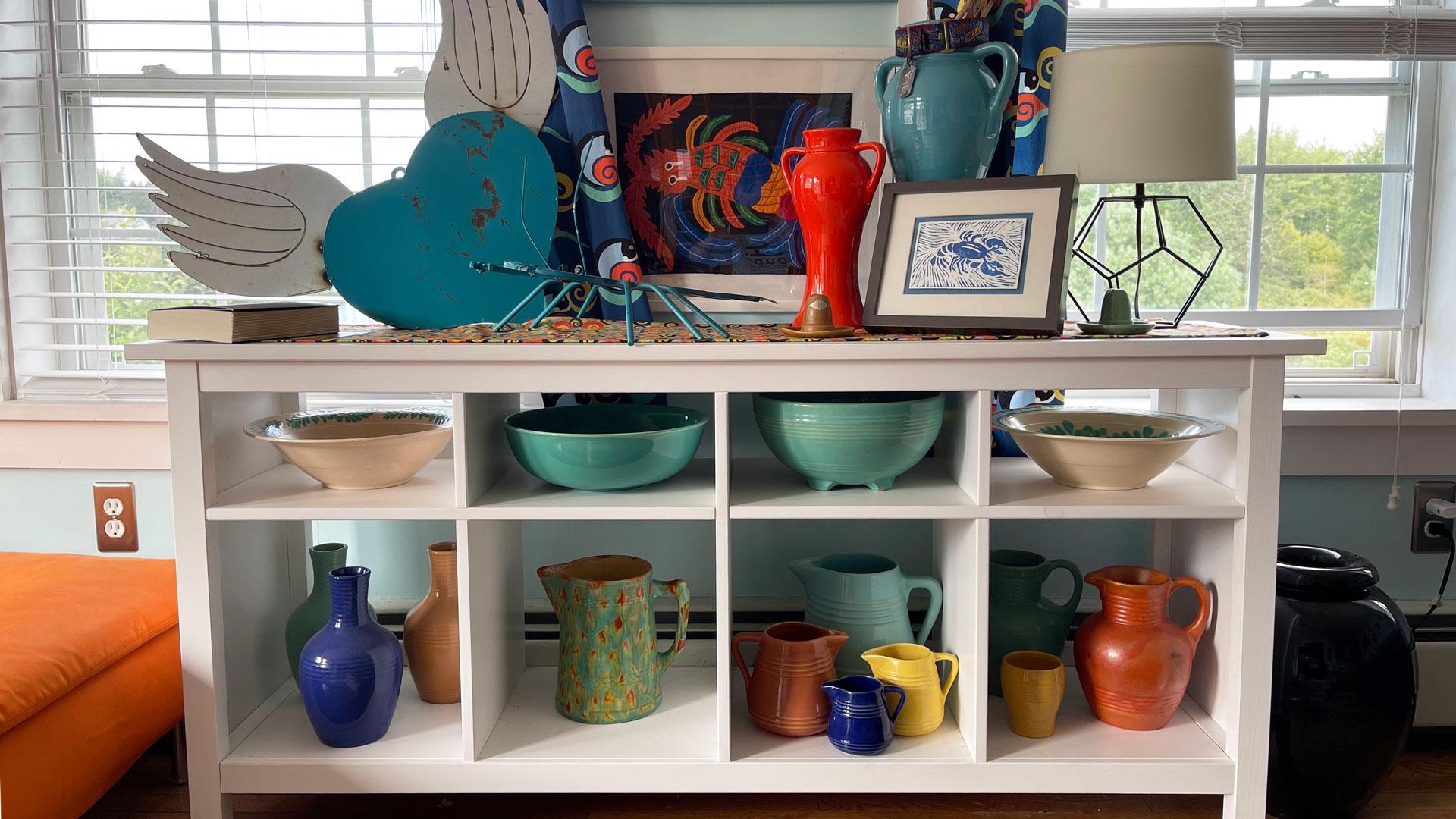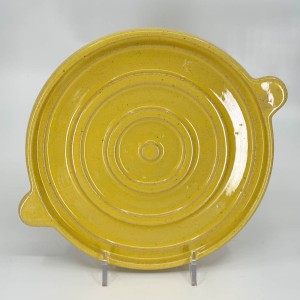
The smaller #201 trivet in yellow.
QwkDog Pacific Pottery Hostessware 201 Trivet yellow
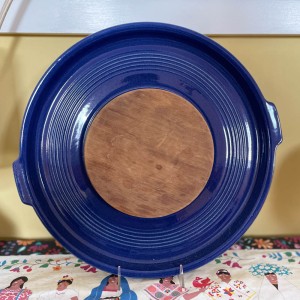
It's just a tab-handled platter with a piece of wood screwed on to it.
QwkDog Pacific Pottery Hostessware 414 Tab Cheese Platter pacific blue
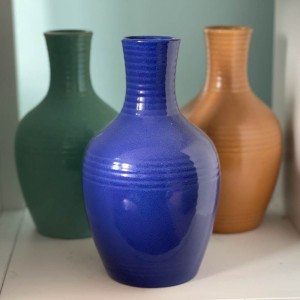
Early #410 carafes from Wells Antiques (collection of Bill Stern). These examples are missing their lids.
QwkDog Pacific Pottery Hostessware 410 Carafes Bill Stern
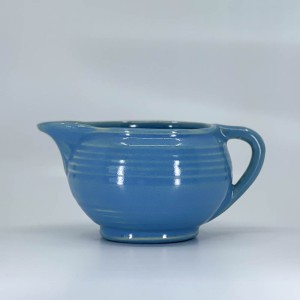
A freebie that the seller threw in when I bought the sugar
QwkDog Pacific Pottery Hostessware 404 Creamer delph blue
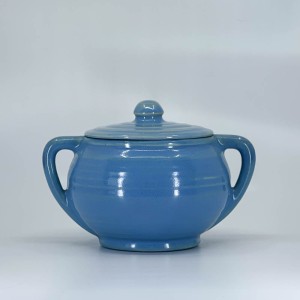
Pacific sold the lid separately, so they're really hard to find.
QwkDog Pacific Pottery Hostessware 403 A Sugar Lid delph blue
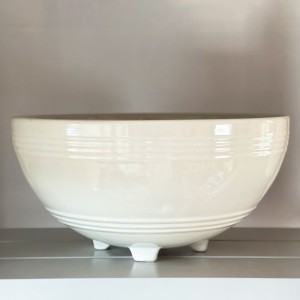
One of my favorite pieces - the giant 14" punch bowl in white (Jack Chipman)
QwkDog Pacific Pottery Hostessware 312 Punch Bowl white
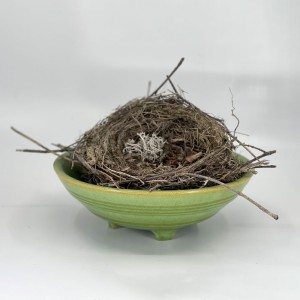
My robin's nest looks great in this early #310 footed bowl in early green glaze. This glaze pre-dates Hostessware.
QwkDog Pacific Pottery Hostessware 310 Footed Bowl early green
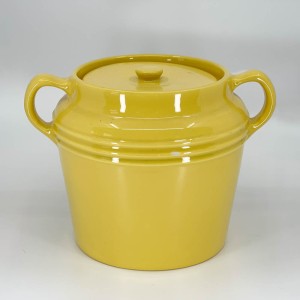
Can you believe I bought this for the lid? The larger-size #326 beanpot is much harder to find than the smaller version. This base has a couple of dings, but I had another mint condition base.
QwkDog Pacific Pottery Hostessware 236 Large Beanpot yellow
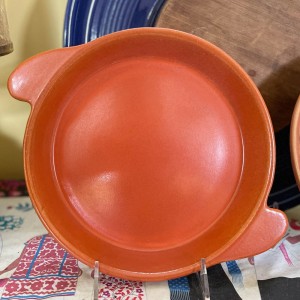
The larger sized #216 shirred egg dish. I like that shirring something requires it's own dish.
QwkDog Pacific Pottery Hostessware 216 Shirred Egg Dish Large apache red
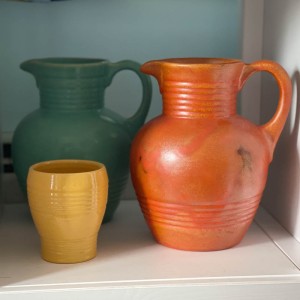
#430 ring pitchers and tumbler from Jack Chipman (Bill Stern collection). I waited YEARS to get my hands on one of these pitchers and I was able to purchase both.
QwkDog Pacific Pottery Hostessware 430-431 Ring Pitcher Set Bill Stern
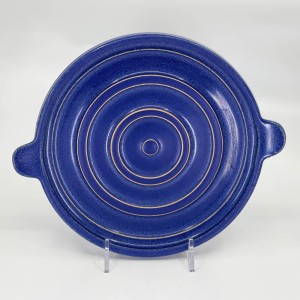
The smaller #209 trivet in Pacific Blue
QwkDog Pacific Pottery Hostessware 201 Trivet Pacblue
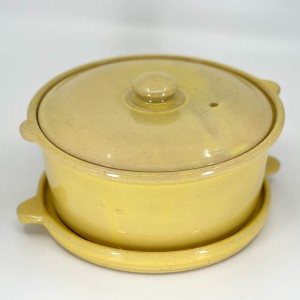
Complete #200-201 casserole set with trivet in an early yellow glaze.
QwkDog Pacific Pottery Hostessware 200-201 Casserole Lid Trivet yellow
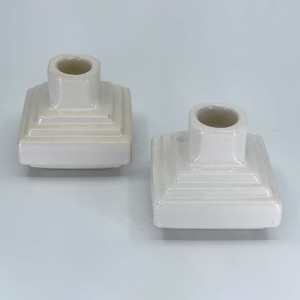
The #716 pyramid candleholders came in both Hostessware and artware glazes. This example is in gloss white.
QwkDog Pacific Pottery Artware 715 Pyramid Candleholders white
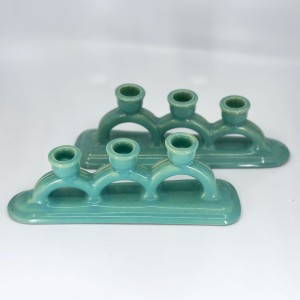
The #707 triple candholder came in Hostessware and artware glazes.
QwkDog Pacific Pottery Artware 707 Candleholders green
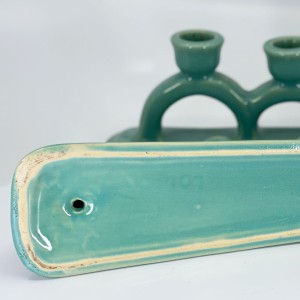
Very faint in-mold mark on the #707 candleholders
QwkDog Pacific Pottery Artware 707 Candleholders green base
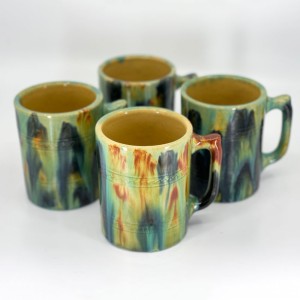
Blended #502 tankard mugs
QwkDog Pacific Pottery Hostessware 502 Tankard Mugs Blended
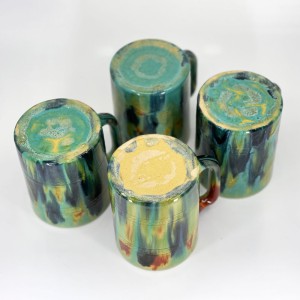
Blended #502 tankard mug bottoms - note the in-mold Pacific mark
QwkDog Pacific Pottery Hostessware 502 Tankard Mugs Blended
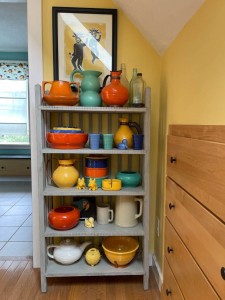
Some random pottery in the bedroom
QwkDog Pacific Pottery Hostessware 507 Tankard Pitcher Plain
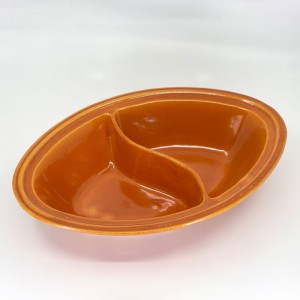
The #640 divided vegetable bottom
QwkDog Pacific Pottery Hostessware 640 A Divided Veg Bowl Lid apache red
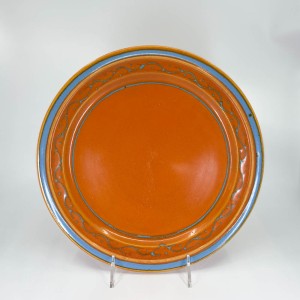
2002 pattern on the #639 muffin plate
QwkDog Pacific Pottery Hostessware Decorated 2002 639 Serving Plates apache red
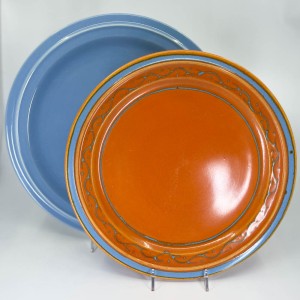
And another 2002 pattern on the #639 muffin plate (shown with #680 larger muffin plate)
QwkDog Pacific Pottery Hostessware Decorated 2002 639 680 Serving Plates apache red
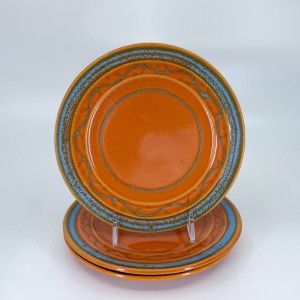
More of the 2002 decorated pattern on a set of Apache Red bnb plates
QwkDog Pacific Pottery Hostessware Decorated 2002 614 BnB Plates apache red
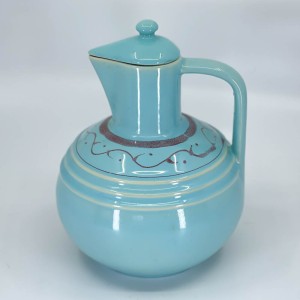
A #453 aqua buffet server in the 2002 pattern.
QwkDog Pacific Pottery Hostessware Decorated 2002 453 carafe aqua
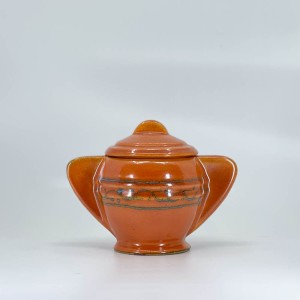
One of my favorite pieces from 2020 collecting - a very rare 407 demi sugar with 407A lid in the 2002 decorated pattern. I randomly found a lot of 2002 pattern last year.
QwkDog Pacific Pottery Hostessware Decorated 2002 407 A Demi Sugar Lid apache red
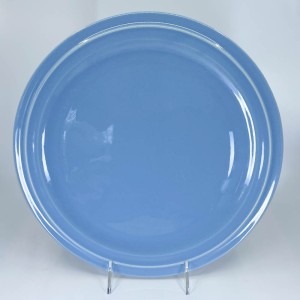
The #680 13" big sister to the #639 12" muffin plate. One of those pieces where you ask, "why?"
QwkDog Pacific Pottery Hostessware 680 Serving Platter delph blue
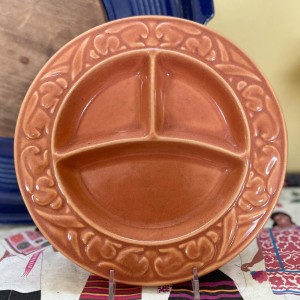
A rare Apricot example child's plate - Bill Stern collection via Jack Chipman. I beat out another collector who wanted this and ended up paying a fortune for it.
QwkDog Pacific Pottery Hostessware 656 Child's Plate apricot
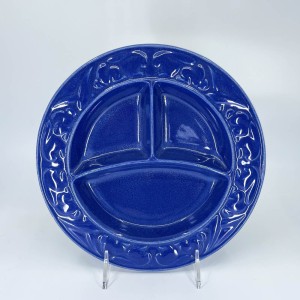
A rare Pacific Blue example child's plate - Bill Stern collection via Jack Chipman
QwkDog Pacific Pottery Hostessware 656 Child's Plate pacific blue
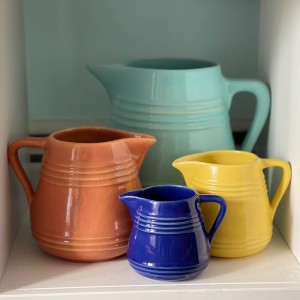
All four sizes of the milk pitchers - the back three were purchased together (and amazingly I didn't have any of these colors in these sizes). The little #427 Pacific Blue example came from Jack Chipman.
QwkDog Pacific Pottery Hostessware 427 428 429 508 Pitchers
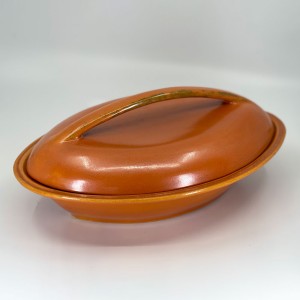
#640A divided vegetable bowl with lid. I bought this from Jack Chipman - it may have come from Bill's collection.
QwkDog Pacific Pottery Hostessware 640 A Divided Veg Bowl Lid apache red
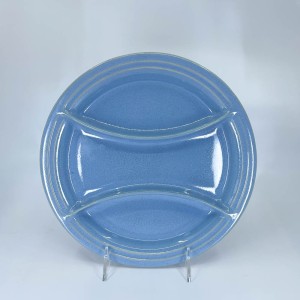
#603 3-part relish from Jack Chipman in delph blue (Bill Stern collection)
QwkDog Pacific Pottery Hostessware 603 Relish delph blue
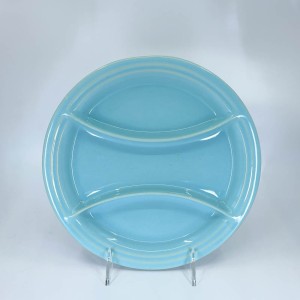
#603 3-part relish from Jack Chipman in aqua (Bill Stern collection)
QwkDog Pacific Pottery Hostessware 603 Relish aqua
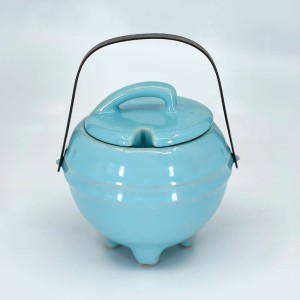
#448 marmalade in aqua from Jack Chipman (Bill Stern collection)
QwkDog Pacific Pottery Hostessware 448 Marmalade aqua Bill Stern
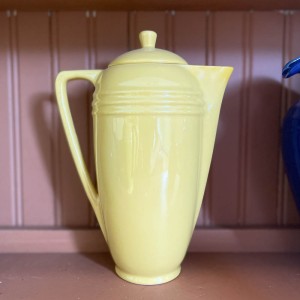
The iconic #442 demitasse pot from Jack Chipman (Bill Stern collection). This piece was featured in Bill's book.
QwkDog Pacific Pottery Hostessware 442 Demitasse Pot Bill Stern
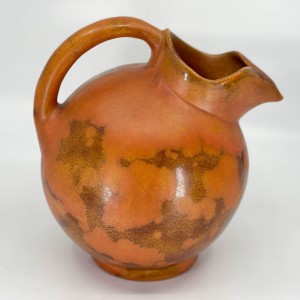
One of my favorite #420 ball pitchers in really early Apache Red
QwkDog Pacific Pottery Hostessware 420 Ball Pitcher apache red
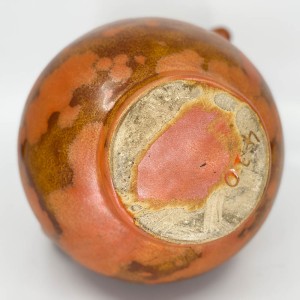
Early #420 ball pitcher mark - note that there is only an inscribed number and no "Pacific" logo
QwkDog Pacific Pottery Hostessware 420 Ball Pitcher base apache red






